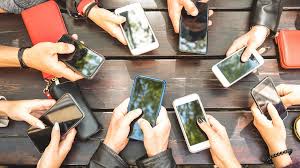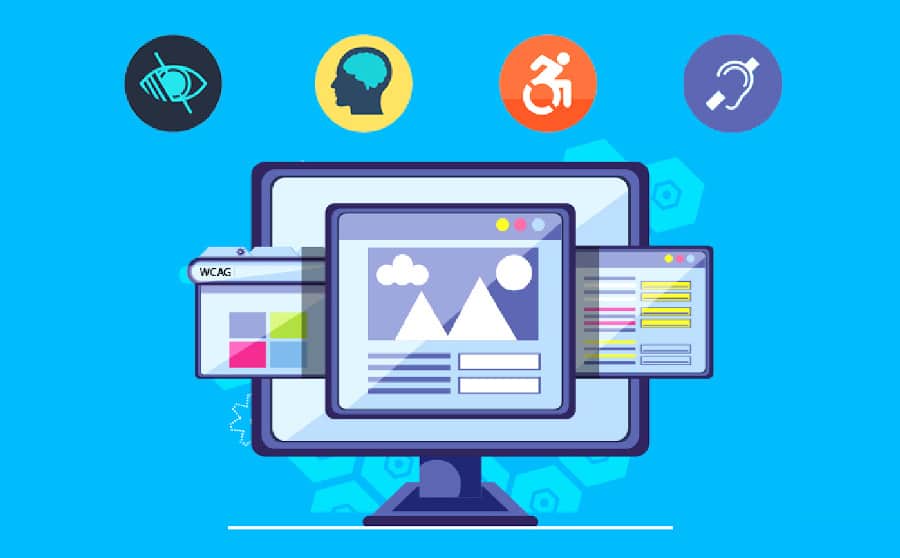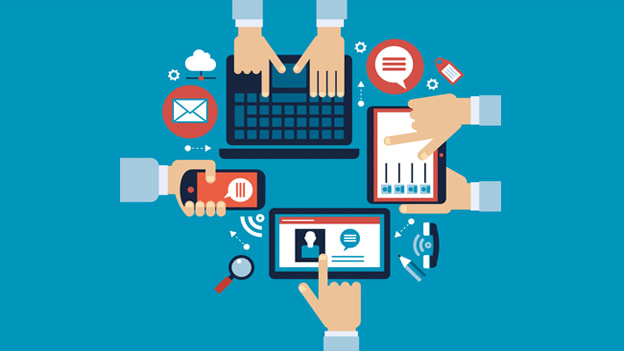Changes in Smartphone and?Impacts?on communication
The evolution of smartphones and impacts is nothing short of remarkable. From its humble beginnings as simple mobile phones to the powerful.

In just a few short decades, smartphones and impacts have become an integral part of our daily lives, transforming the way we communicate, work, and live.
These pocket-sized devices have come a long way from their humble beginnings, revolutionizing the world of technology and changing the way we interact with each other.
In this blog post, we will take a deep dive into the evolution of smartphones and explore the profound impact they have had on communication.
The Birth of the Smartphones and Impacts
To understand the evolution of smartphones, we must first go back to their origins. The concept of a "smart" phone, one that could do more than just make calls, can be traced back to the early 1970s. However, it wasn't until the late 1990s and early 2000s that we saw the emergence of devices that resembled what we now recognize as smartphones.
One of the early pioneers in this field was IBM's Simon Personal Communicator, introduced in 1994. The Simon could make calls, send faxes, emails, and even had basic PDA functions. While it was revolutionary at the time, it was bulky and expensive, limiting its mass-market appeal.
The Turn of the Century: The Rise of Feature Phones
As we entered the 21st century, mobile phone technology advanced rapidly, giving rise to what we now refer to as "feature phones." These phones offered more advanced features compared to their predecessors, including color screens, cameras, and limited internet connectivity. Brands like Nokia, Motorola, and Sony Ericsson dominated this era with their stylish and functional designs.
The introduction of T9 predictive text input and the ability to send short text messages (SMS) made communication more convenient. People could now send brief messages to each other quickly and efficiently, reducing the reliance on voice calls for everyday conversations.
The Game-Changing Year: 2007 and the iPhone
The year 2007 marked a pivotal moment in the evolution of smartphones and communication. Apple's co-founder and then-CEO, Steve Jobs, introduced the first iPhone, a device that would forever change the mobile landscape. The iPhone combined a sleek design, a multi-touch interface, and an App Store, allowing users to customize their devices with a wide range of applications.
One of the most significant impacts of the iPhone was its role in popularizing mobile internet usage. With the Safari web browser and high-resolution screens, users could access websites, check emails, and engage in online communication like never before. The introduction of the iPhone sparked intense competition, leading to the development of the Android operating system by Google, which further expanded the smartphone market.
The Era of Mobile Apps by Smartphones and impacts
The App Store, launched alongside the iPhone, was a game-changer. It provided a platform for developers to create and distribute applications, giving users access to a vast array of tools, games, and social media platforms. This marked the beginning of a shift from traditional text-based communication to richer, multimedia interactions.
Social media platforms like Facebook, Twitter, and Instagram found their way onto smartphones, enabling people to connect with friends and family, share photos and videos, and express themselves in new ways. The introduction of mobile apps revolutionized how we communicate, as it allowed for instant messaging, voice and video calls, and real-time sharing of experiences.
The Advent of 4G and Beyond
The next major milestone in smartphone evolution came with the introduction of 4G LTE (Long-Term Evolution) networks. This technology provided significantly faster internet speeds, making it even easier to browse the web, stream videos, and engage in high-quality video calls on mobile devices. This increased connectivity paved the way for more seamless and immersive communication experiences.
4G also played a crucial role in the growth of video-sharing platforms like YouTube and live-streaming services like Twitch. It became common for individuals to share their lives in real-time with a global audience, fostering a sense of connectedness and community that transcended geographical boundaries.
Smartphones as Essential Tools for Smartphones and impacts
Over time, smartphones evolved beyond communication devices and became essential tools for both personal and professional life. The introduction of productivity apps, email integration, and cloud storage allowed people to work and collaborate remotely. The COVID-19 pandemic further accelerated this trend, with millions of individuals worldwide relying on smartphones for remote work, education, and telehealth.
The Role of Artificial Intelligence (AI)
Artificial intelligence has also played a significant role in enhancing smartphone communication. AI-powered virtual assistants like Apple's Siri, Google Assistant, and Amazon's Alexa have become integral parts of the smartphone experience. They enable users to perform tasks, search for information, and send messages using voice commands, making communication more intuitive and hands-free.
Additionally, AI-driven features like predictive text and auto-correct have improved the speed and accuracy of typing on smartphones, further enhancing communication efficiency.
The Impact of Social Media on Society
The integration of social media into smartphones has had a profound impact on society. While it has enabled people to connect with friends and family across the globe, it has also raised concerns about privacy, mental health, and the spread of misinformation.
The addictive nature of social media platforms, combined with algorithms designed to keep users engaged, has led to concerns about smartphone addiction and its impact on mental well-being. The constant barrage of notifications, likes, and comments can create a sense of validation and anxiety, affecting individuals' self-esteem and overall happiness.
Moreover, the rapid spread of information on social media can lead to the quick dissemination of both accurate and false information. This has consequences in various aspects of life, from politics to public health, and has raised questions about the responsibility of social media companies in curbing the spread of misinformation.
The Future of Smartphone Communication
As we look to the future, it's clear that smartphones will continue to evolve and shape the way we communicate. Here are some key trends and developments to watch for:
- 5G Connectivity: The rollout of 5G networks promises even faster internet speeds and lower latency, paving the way for innovations like augmented reality (AR), virtual reality (VR), and the Internet of Things (IoT). These technologies will further enhance communication and create new possibilities for immersive experiences.
- Foldable and Flexible Displays: Smartphone design is evolving with the introduction of foldable and flexible displays. These innovations will allow for larger screens that can be folded or rolled up, offering more screen real estate for multitasking and creative communication.
- AI-Powered Communication: AI will continue to play a central role in improving communication. Expect to see more advanced language translation, speech recognition, and personalized communication experiences driven by AI.
- Privacy and Security: With growing concerns about data privacy and cybersecurity, smartphone manufacturers will likely focus on enhancing the security features of their devices to protect user data and ensure secure communication.
- Sustainability: As environmental concerns grow, smartphone companies are increasingly focused on sustainability. This includes designing more eco-friendly devices, reducing e-waste, and using renewable materials.
The evolution of smartphones has been a remarkable journey, transforming how we communicate and connect with the world. From humble beginnings as simple voice-calling devices, smartphones have become indispensable tools for work, play, and social interaction.
With ongoing advancements in technology, we can only anticipate that the future of smartphone communication will be even more exciting and transformative.
As we move forward, it's essential to strike a balance between harnessing the benefits of smartphone communication and addressing the challenges it presents to ensure a healthy and connected digital future.
What's Your Reaction?
















